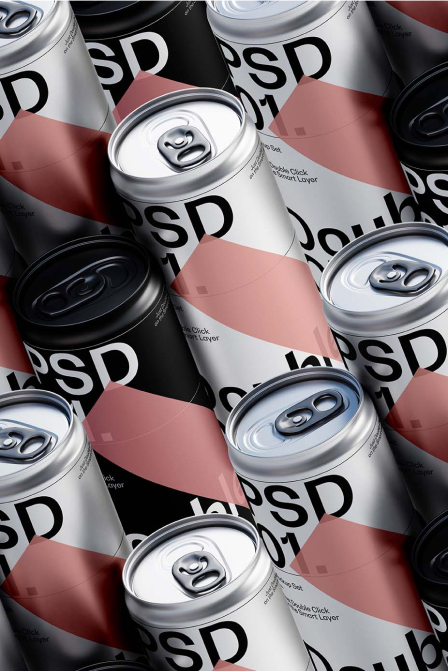What would you tell if there were no previews, no preamble, no overspeaking and overthinking for the things that matter and never imply artificial pathetic?
What would you tell if design industry isn't basically a plain surface but a deep ocean, where you dive searching for yourself and the understanding of reality you're to live in?
We lay apart odd words and bring you a unique chance to reconsider your priorities and look differently at the industry you're in with solid, powerful, enigmatic and yet so sincere Robert Marks, the creative behind RuleByArt.
Please tell us a little bit about yourself. Who are you, what are you and what makes you a remarkable design personality?
Hi. I’m Robert Marks, and I’m the Creative Director and Lead Designer for RuleByArt. My professional commitment lies in working across various mediums in the applied and visual arts. My specializations include abstract digital art, 3D, illustrations, and generative art. I also thoroughly enjoy working with motion graphics, photography, web design, and experimental painting. I’ve been designing for roughly 20 years.
You ask me what I find remarkable about myself? Well, in an effort to retain a shred of humility, I’ll tell you that what drives me is nature and our human experience. And perhaps it’s the remarkable characteristics attributed to them that facilitate my craft. Our connection to the external world — its extraordinary palette and ability to throw us into situations that challenge and make us stronger, and open our eyes are likely what’s most remarkable about it all. And I’m part of that, so I guess I’ll take some of the credit there. We all have the power of shifting perspective. Perhaps that’s why I consider my art to be more of experimentation, and I’ll stop at no medium in telling my story.
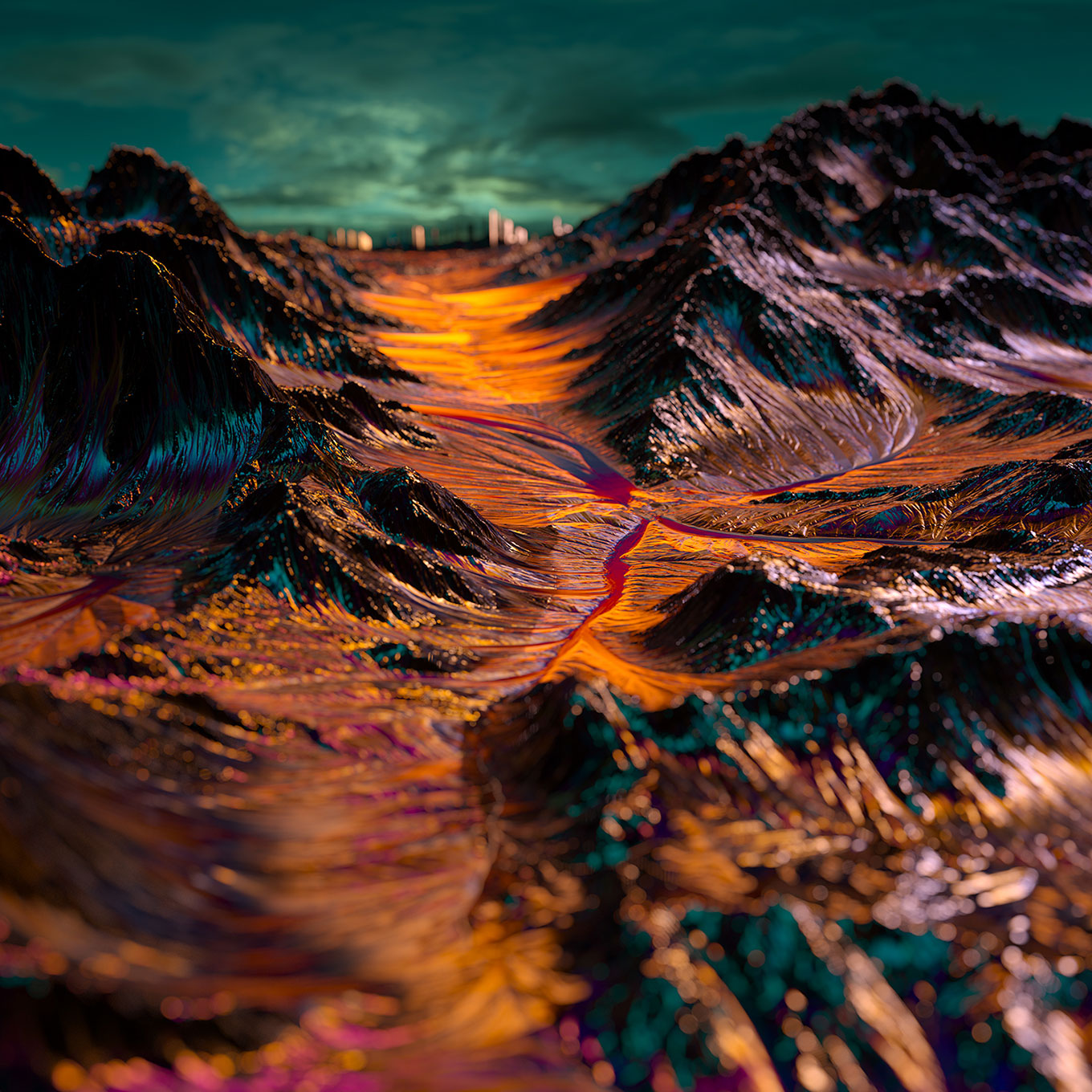
Initially, why have you come to an idea of starting your way of a designer?
Born and raised in Toronto, I was always surrounded by ingenuity. Between my mother’s graceful relationship with creativity and my father’s love for the world of technology, I’ve been blessed with a largely supportive network within my family. They embrace every ounce of my weird. And paired with having two older innovative sisters creating alongside me, it always made me feel like there was no other way to be.
Growing up, I was influenced by graffiti. It was an urgency for a rebellious type of artistic expression while trying to navigate who the hell I was. The grassroots contemplative chaos of it all, paired with standing for something authentic and individual against the status quo resonated with me. This brought me to The Academy of Design in Toronto. There, I developed my skills in Photoshop and digital media. I left school before graduating because I had secured my first job in graphic design and preferred spending any money I had left on equipment I couldn’t otherwise afford. Working with a Digital Media company at this first step, my focus was on graphics, user-interface design, and website development.
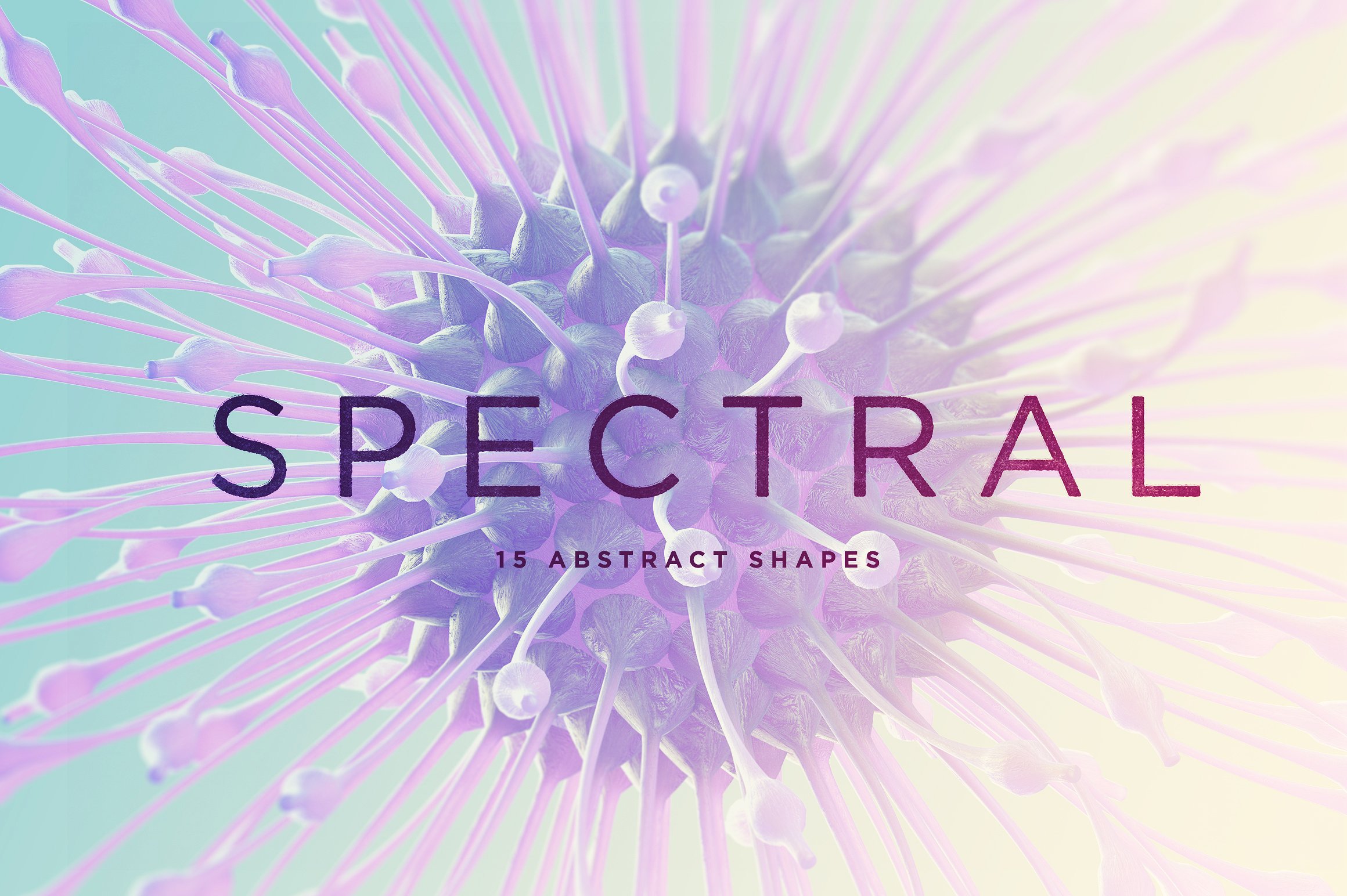
Spectral, a set including 15 high resolution abstract shapes
After 12 years with them, I transitioned to an online music production platform and spent about 3 years living in New York doing the work. Once that particular project was finished, I found crowdsourcing to be a useful avenue for supplemental income. I started brainstorming on a vision for my own creative marketplace with stock art resources. I was driven to create a space where every contributing artist and buyer would work with a product of the highest quality, while met with the artistic integrity they deserved. Now, as I continue to develop RuleByArt, I recognize that being a self-employed entrepreneur has been one of the most rewarding aspects of my professional career.
So, what is the best part of being a self-employed entrepreneur for you?
Freedom of working for myself is likely the best part of it. The freedom of creativity, traveling, and working from anywhere I’d like is a massive benefit. The ability to wake up every day and make weird shit and live well from it is a joy. And I feel very lucky for it. But it’s not all luck. And this takes me to the second part of the question: the less encouraging aspects of the profession involve the grunt work for years to get here. You can’t expect to win the prize without busting your ass. Whether they are internships or part-time jobs, full-time work without creative control, or taking on projects or moves you wouldn’t necessarily otherwise do — you learn from it all, and you earn it. We can’t expect to leave school and be great without paving the way for our excellence first.
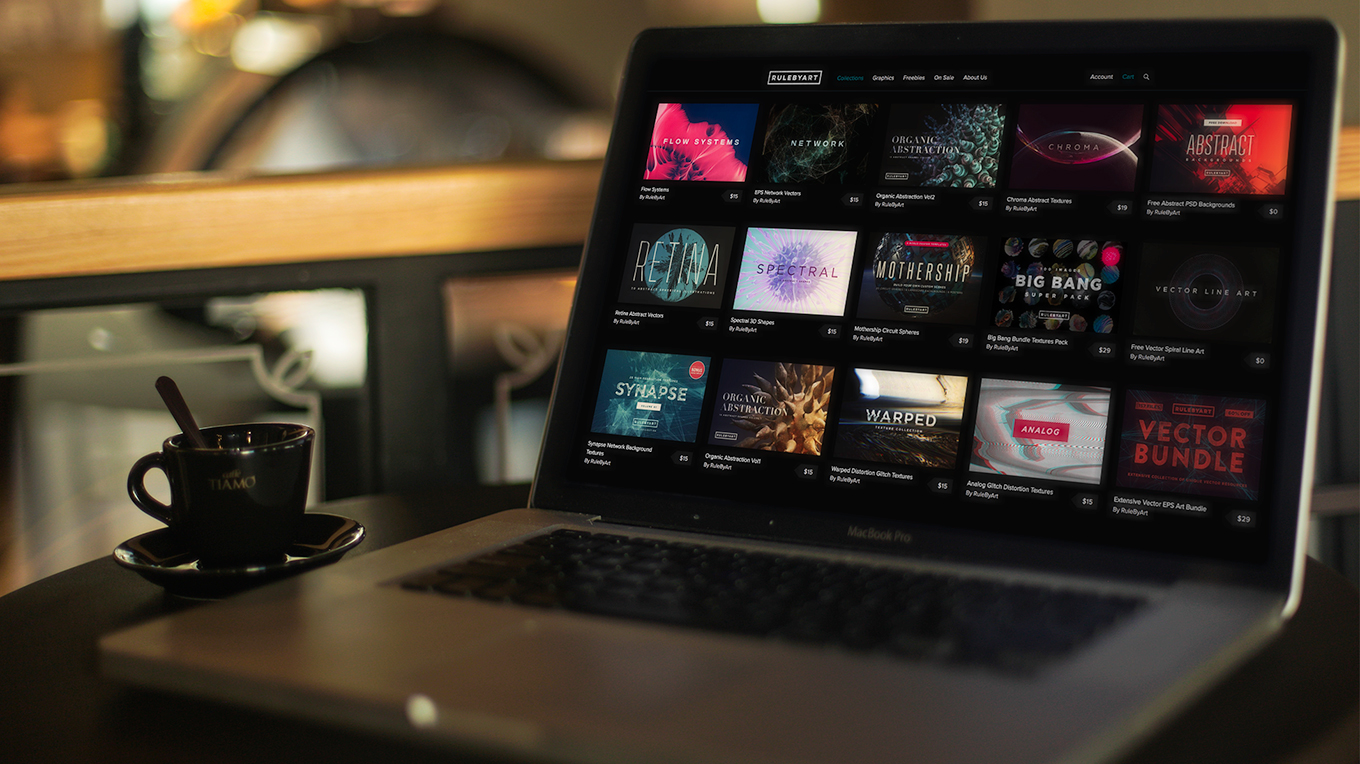
Once having dived into the design, where do you get your inspiration for further creations?
As I mentioned earlier, our natural world is a hefty point of reference for me. Whether it’s the color of the sky when it turns that one beautiful shade against a tree or aerial views of mountain ranges across the globe — inspiration from nature is endless. Taking photos, looking through images, sifting through books, talking to people, exploring online channels — it’s all in there too. Other forms of visual art also pull me in. My latest exhibit entitled: Organic Abstraction, Evolving Connection was based on merging the aptitude of fine art with digital design. The series was created with a fluid painting technique, experimenting with acrylic paints, resin, photography, and graphic design.
Music is also an integral part of my life. I am constantly engaged in finding new stuff, reveling in the old, and taking it all in while I work. It personifies our feelings much like visual art does and takes us places outside of ourselves. And listening to it reminds me of how important and instrumental technology is within all of it. New applications and programs are constantly taking my work to another level.
Progress for me means never putting myself into a category and working with whatever might facilitate an open mind. It means always experimenting with different mediums and not being afraid to learn from the greatness of others while developing my own.
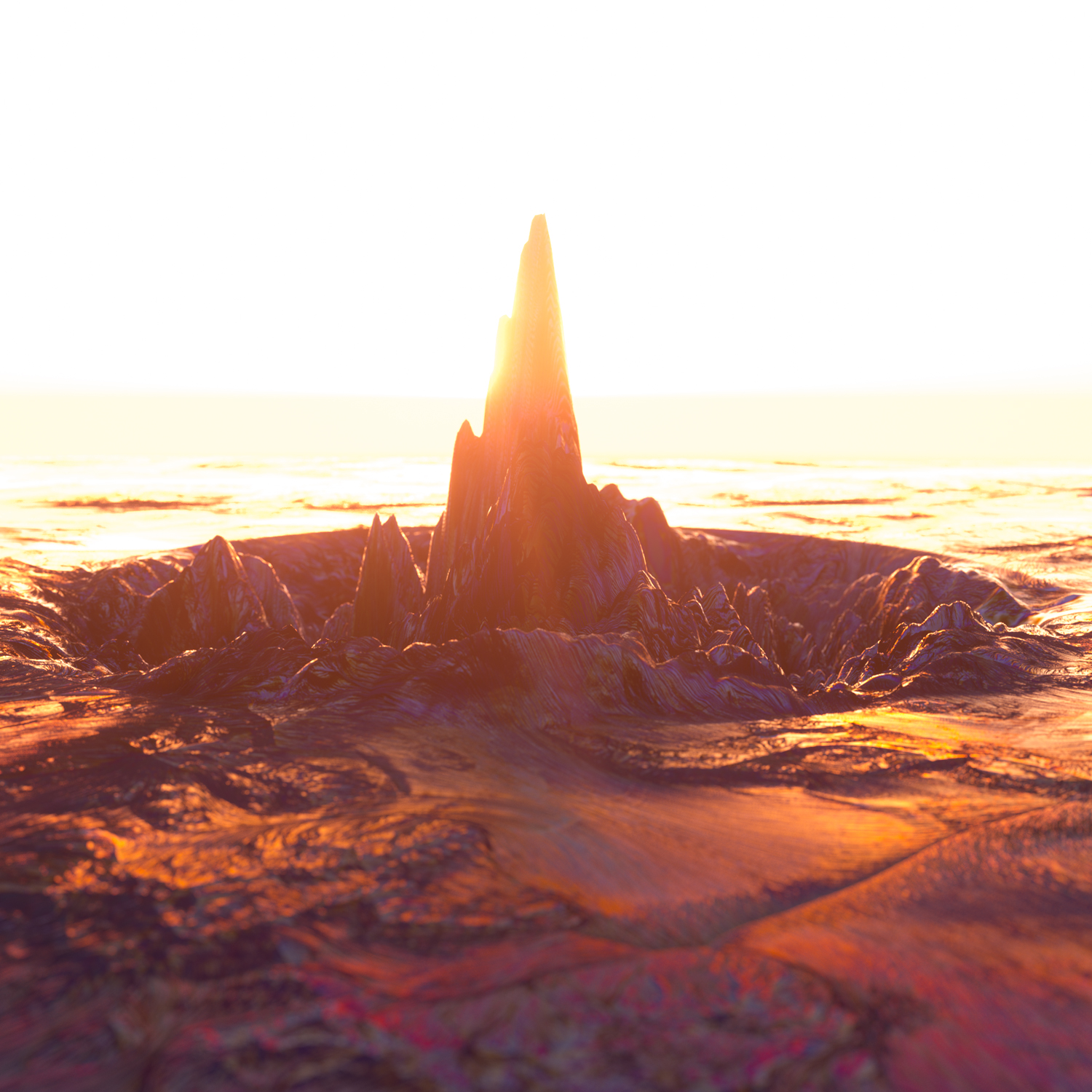
What does your creative process look like? Are you more strictly-organized or liberal when it's about work and design?
My day always involves waking up early. And I schedule my days specific to whatever projects I’m working on. My schedule varies depending on whether I have a particular client I’m working with or creating a new product for my marketplace. I generally have a weekly routine and prioritize accordingly.
When I’m working remotely, I’m happy with my laptop and headphones, but within my studio space, it’s ideal that I have 2 desks — standing while I work most days. I have one powerful PC that does most of my heavy lifting with processing and 3D, and I generally use my laptop for Photoshop and surfing. Everyday changes but music is always a part of my experience. My best stereo equipment lives in my studio.
But I think what’s most important to mention instead of specifics, is that keeping that balance is imperative. It’s important to keep a scheduled routine, but also to break my own rules to create and revel in those serendipitous moments where some of my most widely appreciated pieces were created.
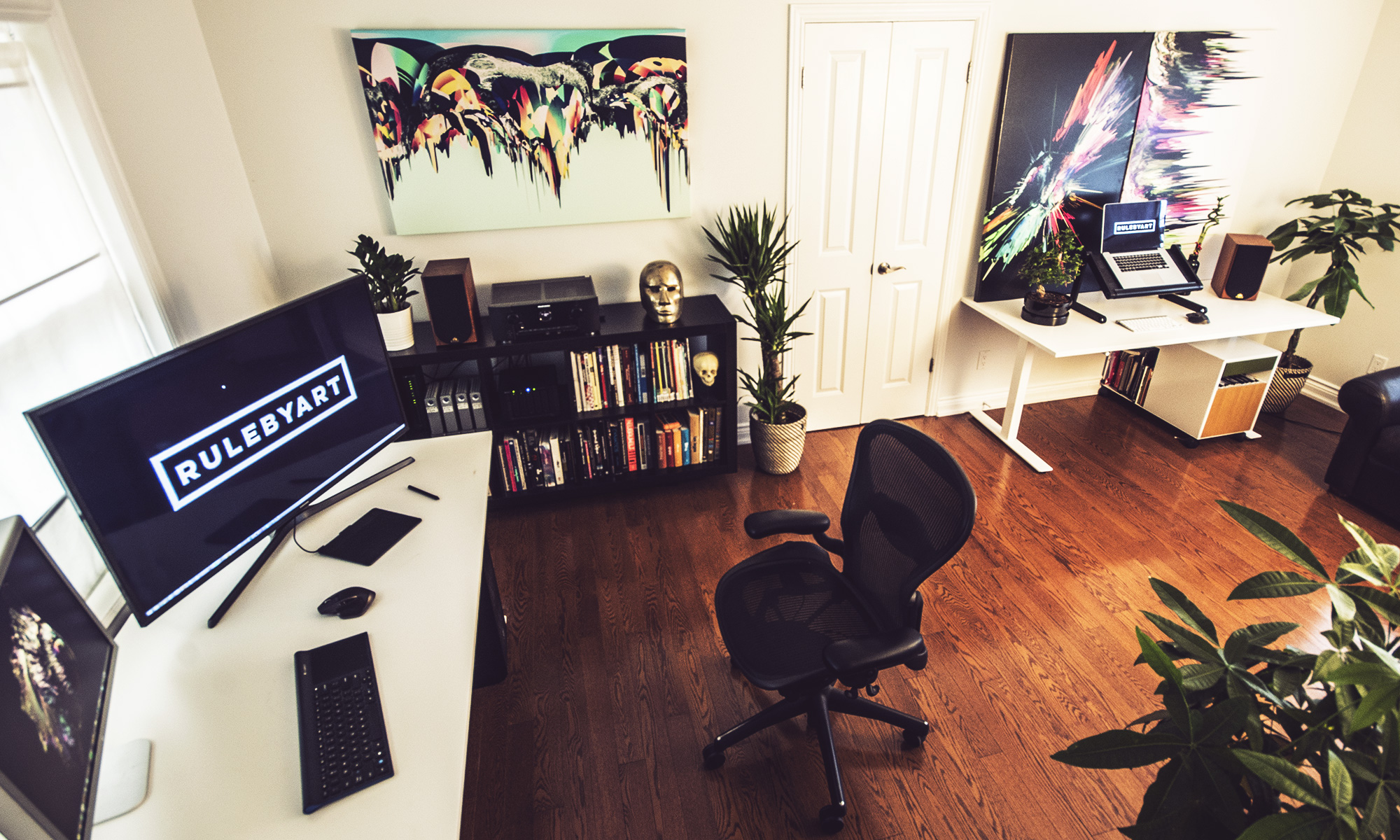
If you had to choose which of your artworks you’d call your number 1?
To be honest, I don’t have a number 1. Some are more popular than others. But I can say that I’m proud of the fact that I’m always progressing and my work getting better with time. And with that type of reasoning, I suppose it would have to be whatever I’m working on at the moment.
What would you advise to the young designers, who're just dreaming about topping Creative Market?
I’d say that staying true to yourself is most important. Be original. Understanding the fine line of learning from fellow designers and not taking what they’ve built and calling it your own. That being said, practice through replication, dissecting other projects and learning through tutorials are advantageous exercises no matter your skill level. Getting to know who you are and what defines you, and maintaining your own artistic integrity is invaluable. Because once you have that, everything you make is authentic — your body of work becomes an embodiment of you. Trust yourself and challenge yourself when it’s necessary.
Aside from that, learning how to navigate the dynamics of the trade. Knowing your audience and always acting with dignity even though situations might get difficult. People celebrate authenticity and want to be moved. Don’t be afraid to step outside of your norm and tell your story how it’s meant to be told. Find your balance and find ways to let things go.
But in the meantime, do not be afraid to be yourself. Keep designing.
